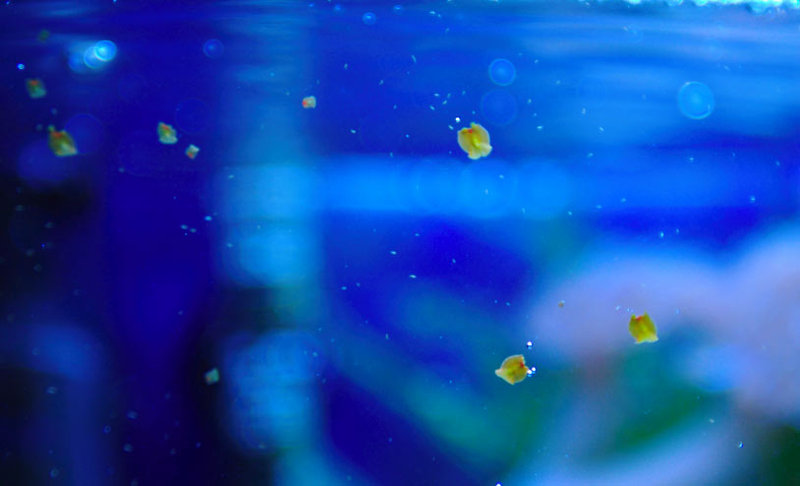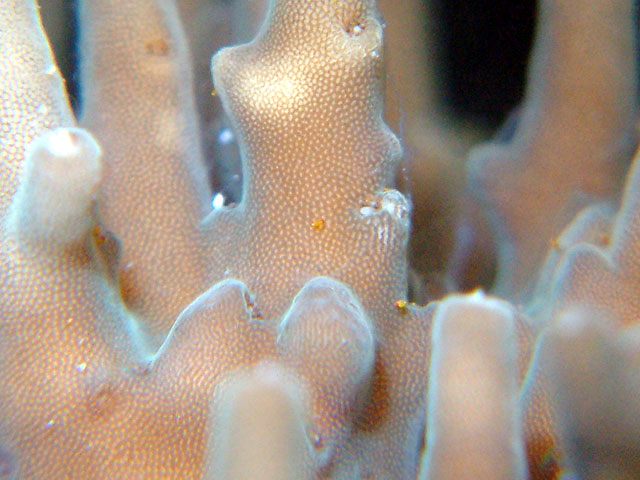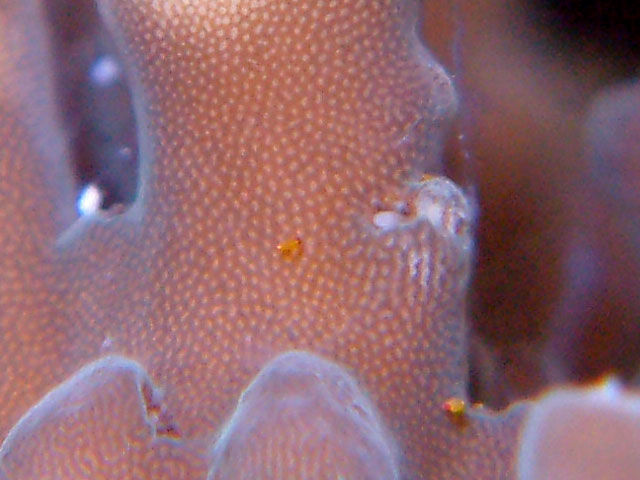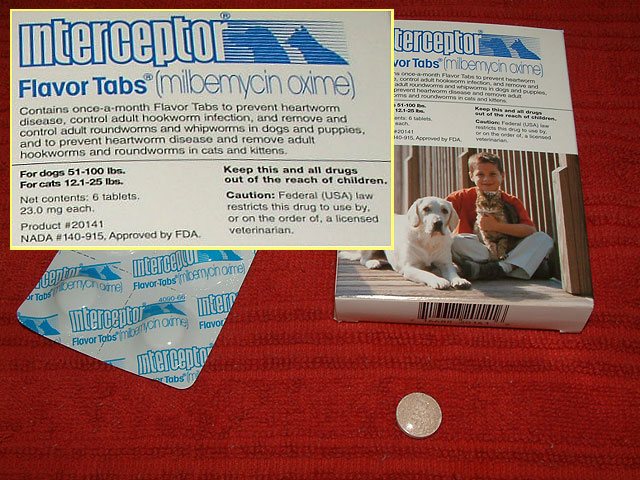You are using an out of date browser. It may not display this or other websites correctly.
You should upgrade or use an alternative browser.
You should upgrade or use an alternative browser.
SPS PREADATORS Red bugs, AEFW's ,Monti nudis and Sea spiders. Pictures Inside
- Thread starter clkwrk
- Start date
Pam Little
New member
Can someone tell me where to get a scale to measure the Interseptor?
speckled trout
New member
First of all, thanks for all the info!
I hope my battle is over. I "had" monitpora nudis that were on a whirling montipora. These had started to migrate to another monti(digitata) that was a little ways away from it. I actually noticed one on the digi. first. After carefully scrutinizing the rest of the tank I discovered that the whirling monti seemed to be the source of the infestation.
I decided to go with a 15s FW dip. This instantly killed the montis. However, it nearly killed the monti colony. It quickly formed a heavy mucous layer and sections became bleached by the end of the next day. I never dipped the digi because I was able to squeesh any that I saw on it.
This was two weeks ago and the colony continues its slow recovery. Sections that were previously bleached have slowly began coloring up again.
I also added a 6-line wrasse from another tank. He went right to work monitoring the tank for anything edible. As I said, that was 2 weeks ago and I haven't seen another.
After talking to several others who had problems, we seemed to have one thing in common after our problem disappeared......wrasses. Each of these people had added wrasses to their systems before the problem disappeared. Several have been "nudi" free for up to a year.
Now, I'm not saying that they are all gone, but at the very least, they're being kept in check. Hopefully, however, they're gone. Because of this, I will always try to maintain at least one wrasse in my systems.
I hope my battle is over. I "had" monitpora nudis that were on a whirling montipora. These had started to migrate to another monti(digitata) that was a little ways away from it. I actually noticed one on the digi. first. After carefully scrutinizing the rest of the tank I discovered that the whirling monti seemed to be the source of the infestation.
I decided to go with a 15s FW dip. This instantly killed the montis. However, it nearly killed the monti colony. It quickly formed a heavy mucous layer and sections became bleached by the end of the next day. I never dipped the digi because I was able to squeesh any that I saw on it.
This was two weeks ago and the colony continues its slow recovery. Sections that were previously bleached have slowly began coloring up again.
I also added a 6-line wrasse from another tank. He went right to work monitoring the tank for anything edible. As I said, that was 2 weeks ago and I haven't seen another.
After talking to several others who had problems, we seemed to have one thing in common after our problem disappeared......wrasses. Each of these people had added wrasses to their systems before the problem disappeared. Several have been "nudi" free for up to a year.
Now, I'm not saying that they are all gone, but at the very least, they're being kept in check. Hopefully, however, they're gone. Because of this, I will always try to maintain at least one wrasse in my systems.
reefcrazed
New member
First, good day reefers! After hours of reading and much thought about AEFW's I wanted to run a course of action by you to inquire about your thoughts.
This treatment would require the use of a qt for at least a month or longer as well as all the hard work of checking the corals first every week, then every other week. This method is also NOT using any unnatural chemicals that could possibly kill the coral as well as everything else.
1. I believe the first course should be to try to completely eradicate the eggs by using a wire brush, a toothbrush or a llashcomb (see following link) http://tweezerman.com/index.cfm?pag...detail∏=77. Once you believe you have gotten all the eggs, cover the area with superglue.
2. Next do a fresh water dip for no longer than a couple of minutes to kill the adults and juveniles.
3. In your qt, have a wrasse (banana or lubbocks seem to enjoy the fw), emerald crabs and blue legged hermit crabs to continue the work of eating the adults and eggs that you've missed.
4. Keep affected corals in qt for at least a month to a month and 1/2 until any of the stragglers that may be in the main tank die due to lack of food.
It seems that when the interceptor was applied to rid the red bugs, possibly the natural predation of the fw's were also wiped out. Now, the method I am trying to implement does not require any chemical to be used, which could possibly cause other problems in the future with something lurking that we just don't see right now, (we didn't see these things, did we?). The only thing "out of the ordinary" for the coral to be subjected to would be fresh water, which, in some areas wouldn't be out of the ordinary for wild corals (Great Barrier Reef at low tide during a rain storm).
Now, my questions are as follows:
1. What method do you believe would be the best tool to use to get/kill the eggs?
2. As far as wrasses and crabs go, is anyone using these as predators with succes or is this just heresay? Since acro crabs aren't attainable, what would the next type of crab be? I noticed that someone had blue legged hermit crabs as well as an emerald crab and were having success. With the vast knowledge on this forum, which crab would be the next in line to the acro crab to possibly predate the AEFW's?
These are only my assumptions as to the "now" problem of AEFW's. This is my hypothesis after hours of research and much afterthought and trying to figure out a "natural" way to rid these now pests.
What are your thoughts???
This treatment would require the use of a qt for at least a month or longer as well as all the hard work of checking the corals first every week, then every other week. This method is also NOT using any unnatural chemicals that could possibly kill the coral as well as everything else.
1. I believe the first course should be to try to completely eradicate the eggs by using a wire brush, a toothbrush or a llashcomb (see following link) http://tweezerman.com/index.cfm?pag...detail∏=77. Once you believe you have gotten all the eggs, cover the area with superglue.
2. Next do a fresh water dip for no longer than a couple of minutes to kill the adults and juveniles.
3. In your qt, have a wrasse (banana or lubbocks seem to enjoy the fw), emerald crabs and blue legged hermit crabs to continue the work of eating the adults and eggs that you've missed.
4. Keep affected corals in qt for at least a month to a month and 1/2 until any of the stragglers that may be in the main tank die due to lack of food.
It seems that when the interceptor was applied to rid the red bugs, possibly the natural predation of the fw's were also wiped out. Now, the method I am trying to implement does not require any chemical to be used, which could possibly cause other problems in the future with something lurking that we just don't see right now, (we didn't see these things, did we?). The only thing "out of the ordinary" for the coral to be subjected to would be fresh water, which, in some areas wouldn't be out of the ordinary for wild corals (Great Barrier Reef at low tide during a rain storm).
Now, my questions are as follows:
1. What method do you believe would be the best tool to use to get/kill the eggs?
2. As far as wrasses and crabs go, is anyone using these as predators with succes or is this just heresay? Since acro crabs aren't attainable, what would the next type of crab be? I noticed that someone had blue legged hermit crabs as well as an emerald crab and were having success. With the vast knowledge on this forum, which crab would be the next in line to the acro crab to possibly predate the AEFW's?
These are only my assumptions as to the "now" problem of AEFW's. This is my hypothesis after hours of research and much afterthought and trying to figure out a "natural" way to rid these now pests.
What are your thoughts???
KenT
New member
Well, this is what I've found that are Monti eating nudibranches.
Scroll down http://reefcentral.com/forums/showthread.php?s=&postid=6041320#post6041320
Scroll down http://reefcentral.com/forums/showthread.php?s=&postid=6041320#post6041320
melev
Well-known member
<a href=showthread.php?s=&postid=9376487#post9376487 target=_blank>Originally posted</a> by marsh

ID'd as planaria aka flat worm
How is this differnt from Red Bug
A red bug looks like this:

melev
Well-known member
Re: Bug ID please!!
Re: Bug ID please!!
The picture is small, but I think those are good isopods.

Re: Bug ID please!!
<a href=showthread.php?s=&postid=9377957#post9377957 target=_blank>Originally posted</a> by KenT
Anyone know what these are? They are multiplying rapidly. My Mont. Confusa has been slowely dying and thought these might be the cause. They are all over the tank, and the Monti, but not on the fleshy areas. Thanks
[/URL][/IMG]
The picture is small, but I think those are good isopods.

gkarshens
New member
If you go back to page 8 in this thread I posted some pics of the ones I had. I was able to get rid of them by breaking off any areas that had eggs laid and throwing them away and removing any nudibranchs I could get to. I also introduced a Two-spot Wrasse (any large mouthed Wrasse will work). It has been over a month since I have seen any and all my surviving Montis are growing again.
Melev
I have never seen red bugs... yet. The planaria and red bug look similar grossly in pictures...at least superficially to the uninitiated.
Planaria, I have seen, they appear flat and have a red "head"...maybe 1-2mm in maximal size...seem to start in the floor of the aquarium and move upwards. Injury to corals, from my reading, appears to come from shading when they are prolific in covering a coral buit do not have a direct mechanical or toxic effect on corals. They appear to be a self-limiting problem. They are possible due to excess feedings and have natural predators in a nudibranch.
The red bugs, aside from turning up on smooth acropora which planaria also can do, appear to have a 3-D appearance (see left side of your photo)...also have a red "head" and the size is ?<1mm.
What is the danger of red bugs to the acropora? Just scarring (i.e. a cosmetic issue) or injury leading to necrosis and loss of the a colony? Any know risk factors other than hitchhiking into a closed system? Are their any known natural predators of red bugs? Any knowledge of how they affect corals in the wild?
BTW thank you very much for your prior answer. Sometimes a picture is worth a thousand words..sometimes leads to a thousand questions

I have never seen red bugs... yet. The planaria and red bug look similar grossly in pictures...at least superficially to the uninitiated.
Planaria, I have seen, they appear flat and have a red "head"...maybe 1-2mm in maximal size...seem to start in the floor of the aquarium and move upwards. Injury to corals, from my reading, appears to come from shading when they are prolific in covering a coral buit do not have a direct mechanical or toxic effect on corals. They appear to be a self-limiting problem. They are possible due to excess feedings and have natural predators in a nudibranch.
The red bugs, aside from turning up on smooth acropora which planaria also can do, appear to have a 3-D appearance (see left side of your photo)...also have a red "head" and the size is ?<1mm.
What is the danger of red bugs to the acropora? Just scarring (i.e. a cosmetic issue) or injury leading to necrosis and loss of the a colony? Any know risk factors other than hitchhiking into a closed system? Are their any known natural predators of red bugs? Any knowledge of how they affect corals in the wild?
BTW thank you very much for your prior answer. Sometimes a picture is worth a thousand words..sometimes leads to a thousand questions
Last edited:
melev
Well-known member
Planaria are worms. They don't do obvious damage but if many of them die at once, it can cause a massive event in the tank where losses will incur. They are flat and only billow up to catch some current like a sail to pull themselves up the glass. Here are a couple more images of the flatworms.


The cure for red planaria is good preparation (for 14 days, imho) prior to dosing Flatworm eXit.
Red bugs are similar to fleas. They bite the corals, their tissue, and cause polyps to hide in the skeleton instead of extending to feed. The product that kills red bugs is used on dogs to kill heartworms (rather than fleas).
Here is another couple of pictures of redbugs:



Interceptor (prescribed by a veterinarian) kills red bugs and many other crabs, shrimp and pods. These can be replaced after the red bugs are gone though.



The cure for red planaria is good preparation (for 14 days, imho) prior to dosing Flatworm eXit.
Red bugs are similar to fleas. They bite the corals, their tissue, and cause polyps to hide in the skeleton instead of extending to feed. The product that kills red bugs is used on dogs to kill heartworms (rather than fleas).
Here is another couple of pictures of redbugs:



Interceptor (prescribed by a veterinarian) kills red bugs and many other crabs, shrimp and pods. These can be replaced after the red bugs are gone though.

LeslieH
Premium Member
<a href=showthread.php?s=&postid=7912557#post7912557 target=_blank>Originally posted</a> by Acroholic
I did a quick freshwater dip of some Zoo's I have, to figure out why they are all not opening, looking to find a nudibranch or something. To my surprise, I found a bristleworm, a 2" red worm and a few of these flatworms.....
Can anyone identify these????????

Sorry to be so late into the discussion - I normally don't browse this forum. These are the scales (dorsal skin flaps) of a polychaete worm in the family Polynoidae that have fallen off. You can see some very nice shots of hitchhiker polynoids on Charles1958's page http://home2.pacific.net.ph/~sweetyummy42/index.html (go to site map, then hitchhikers). They're mostly micropredators on smaller worms & other organisms, detritivores & scavengers. I don't know of any reports of scaleworms eating corals but since some are coral commensals that is a possibility.
hey melev i just got a new frag of a awesum teal with purple polyps its gorgeous it is from a ****ty lfs and i dipped it maybe not long enough but i did nothice real small like 3 time the size of a pin head on my new frag. now i first thought of red bug but they are white not yellow with a red head, i was wonderign do small red bugs appear white? i dotn have a good camera with good zoom so im screwed as of right now. the white things kind of look like the white spots of your second red bug shot above to left of the pic. and the frags tipped r missing a few little edges, but i suspect thsi from a teddybear in the lfs tank or the kid that put it in the bag the tip hit the table when he set the bag down like and idiot.so i figure the frag will heal in about a weeka nd everyhtign will be ok. and another question would be do these bugs spread from one acro to the neaxt and if they do how fast would they spread across sand about 10 inches to anothjer acro? would they leave the acro they r currently on to find another if it is still live? basically if i leave this frag in over night and they r bugs will they spread within lets say 4 days?
melev
Well-known member
What I would suggest is you go to my ID page and specificially to the pods page. Take a look at those and see if any look like the small beasties you saw on your coral.
Once in the tank, anything goes. They can travel by crawling, or be propelled by flow to another spot in the tank. They could even hitch a ride on the back of a hermit or snail, only to hop off at the next location.
A redbug that is pure white seems plausible, but rather unlikely. They'd have to be in an area of pure darkness to have no coloration at all.
Once in the tank, anything goes. They can travel by crawling, or be propelled by flow to another spot in the tank. They could even hitch a ride on the back of a hermit or snail, only to hop off at the next location.
A redbug that is pure white seems plausible, but rather unlikely. They'd have to be in an area of pure darkness to have no coloration at all.
Similar threads
- Replies
- 7
- Views
- 2K
